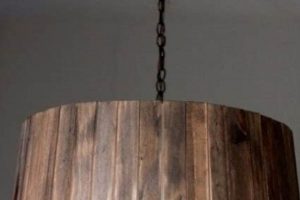Creating photographic memories of pregnancy without professional assistance involves carefully considered strategies. Such approaches often include utilizing available resources, scouting locations that hold personal significance, and employing amateur photography techniques. These self-directed endeavors offer a way to capture the unique experience of expecting a child within a comfortable and controlled environment.
The value of documenting this pivotal life stage lies in its ability to preserve cherished moments for future reflection. This undertaking enables personalization and creative control, aligning the visual narrative with the expectant parents’ preferences. Historically, commissioned portraits were the primary means of commemorating such events; however, modern technology and readily available equipment have facilitated broader accessibility to image creation. The cost-effectiveness and intimate setting offered by this method contribute to its growing appeal.
The following sections will delve into specific considerations for a successful implementation, covering aspects such as location selection, lighting techniques, posing suggestions, and prop utilization, all designed to guide individuals through the process of creating meaningful and aesthetically pleasing pregnancy photographs.
Tips for Executing a Self-Directed Pregnancy Photo Session
Achieving quality results in a self-directed pregnancy photo session requires meticulous planning and attention to detail. The following tips offer guidance on critical aspects to consider.
Tip 1: Location Scouting and Selection: Identify locations that offer appropriate lighting conditions and aesthetic backgrounds. Consider factors such as time of day, natural light availability, and background distractions. Parks, beaches, or even well-lit areas within the home can serve as suitable settings. Evaluate the location’s accessibility and ensure minimal disruption from external elements.
Tip 2: Optimal Lighting Techniques: Natural light is generally preferred. Conduct shoots during the “golden hours” (shortly after sunrise and before sunset) for soft, diffused lighting. Avoid direct sunlight, which can create harsh shadows. If shooting indoors, utilize window light and consider using reflectors to bounce light and fill in shadows. Supplementary lighting, such as softboxes, can be beneficial in controlled environments.
Tip 3: Posing and Composition: Experiment with various poses to accentuate the pregnant form. Profile shots, gentle cradling of the belly, and partner involvement are effective. Employ basic composition principles, such as the rule of thirds, leading lines, and symmetry, to enhance visual appeal. Maintain a relaxed and natural posture.
Tip 4: Wardrobe Selection: Choose clothing that complements the subject’s skin tone and body shape. Flowing dresses or form-fitting attire can effectively highlight the pregnancy silhouette. Neutral colors and soft fabrics tend to photograph well. Ensure the clothing is comfortable and allows for ease of movement.
Tip 5: Prop Utilization: Thoughtfully selected props can add personalization and visual interest. Sonogram images, baby shoes, or sentimental items can enhance the storytelling aspect of the photographs. Avoid excessive or distracting props that detract from the primary subject.
Tip 6: Camera Settings and Focus: Utilize a camera capable of capturing high-resolution images. Ensure proper focus on the subject’s face or belly. Experiment with aperture settings to control the depth of field, creating a blurred background effect. Utilize a tripod for sharper images, particularly in low-light conditions.
Tip 7: Post-Processing Techniques: Basic image editing can enhance the final results. Adjust brightness, contrast, and color balance to achieve the desired aesthetic. Remove blemishes or distractions as needed. Maintain a natural and subtle editing style.
Adhering to these guidelines promotes successful execution, yielding visually appealing and emotionally resonant keepsakes. The culmination of diligent planning, thoughtful execution, and judicious post-processing ensures a satisfactory outcome.
The subsequent section will address potential challenges and troubleshooting strategies that can arise during the process.
1. Location Aesthetics
The aesthetic qualities of a chosen location significantly impact the overall visual narrative of a self-directed pregnancy photography session. Careful consideration of these elements contributes to the emotional resonance and professional appearance of the final images. Effective location aesthetics elevate the composition and contribute to a cohesive and visually compelling narrative.
- Background Composition
The backdrop establishes context and influences the overall mood. Natural settings, such as parks or beaches, offer organic textures and soft lighting, while urban environments provide structured lines and architectural elements. The background should complement the subject without overshadowing them. Clutter and distracting elements ought to be minimized to maintain focus on the expectant mother.
- Lighting Considerations
Natural light is a crucial aspect of location aesthetics. The direction and intensity of sunlight affect the mood and clarity of the photographs. Locations with diffused sunlight, such as shaded areas or those lit during the golden hours (early morning or late afternoon), generally produce more flattering results. Indoor locations should be chosen based on the availability and quality of natural light sources, supplemented by artificial lighting if necessary.
- Color Palette and Harmony
The color palette of the location should harmonize with the subject’s wardrobe and overall aesthetic. Neutral or muted tones create a timeless and elegant feel, while vibrant colors can add energy and visual interest. Ensure that the colors within the location do not clash with or distract from the subject. Cohesive color schemes enhance the visual appeal and contribute to a unified composition.
- Personal Significance
Locations holding personal significance to the expectant parents can add a layer of emotional depth and storytelling to the photographs. These locations might include the site of their first date, a beloved park, or the couple’s home. Incorporating such locations infuses the images with a sense of authenticity and connection, creating more meaningful and lasting memories.
The integrated assessment of background composition, lighting conditions, color palettes, and personal significance allows for a strategic approach to location selection, directly influencing the overall success and visual impact of self-directed pregnancy photography. Thoughtful consideration of these elements results in images that are not only aesthetically pleasing but also emotionally resonant.
2. Lighting Conditions
Adequate and appropriate lighting conditions are a critical component of successful self-directed pregnancy photography. Poor lighting can result in underexposed or overexposed images, harsh shadows, and a general lack of visual appeal. Therefore, understanding and manipulating lighting are paramount to achieving professional-quality results in a do-it-yourself setting. For instance, shooting outdoors during midday often produces harsh shadows and unflattering highlights on the subject’s face, necessitating the use of diffusers or reflectors to soften the light. Conversely, shooting indoors without sufficient ambient light can lead to grainy and poorly defined images, requiring the implementation of artificial lighting solutions such as softboxes or ring lights.
The practical application of this understanding involves strategic timing and equipment choices. Photographing during the “golden hours” (shortly after sunrise and before sunset) provides soft, diffused natural light that is highly flattering. Alternatively, if shooting indoors, utilizing large windows as a primary light source and employing reflectors to bounce light and fill in shadows can effectively mimic natural lighting conditions. A real-life example would be a pregnant subject positioned near a window, with a white reflector placed opposite the window to bounce light back onto her face, thereby eliminating harsh shadows and creating a more even and flattering illumination. Furthermore, a controlled environment using studio lighting equipment grants greater control over light intensity, direction, and color temperature.
In summary, controlling lighting conditions is pivotal in self-directed pregnancy photography. By understanding the interplay between natural and artificial light, and implementing appropriate techniques, individuals can overcome common challenges and produce aesthetically pleasing images. While mastering lighting requires experimentation and practice, the effort significantly enhances the quality and emotional impact of the photographs, creating lasting memories of this significant life stage. The effective management of illumination is inextricably linked to the success of the overall photographic endeavor.
3. Posing Guidance
Effective posing guidance is a crucial element within the context of self-directed pregnancy photography. It addresses the challenges of capturing flattering and meaningful images without the direct supervision of a professional photographer. Understanding fundamental posing techniques can elevate the quality of the final product, transforming simple snapshots into artistic representations of this significant life stage.
- Accentuation of the Baby Bump
Specific poses are designed to highlight the pregnant form. Gentle cradling of the belly, side profiles, and the strategic placement of hands are commonly employed. For example, a profile shot with one hand above and one below the belly naturally accentuates the curvature. This technique is fundamental in pregnancy photography as it draws attention to the subject’s pregnant form. Such poses underscore the central theme of maternity and create a visually appealing image.
- Partner Involvement and Interaction
Incorporating the partner adds emotional depth and narrative to the photographs. Poses that depict intimacy and connection, such as gentle embraces, hand-holding, or shared gazes, enhance the sentimental value. A partner kneeling behind the subject with arms around her belly conveys support and anticipation. Partner involvement adds a personal dimension to the session and emphasizes the shared experience of pregnancy, enriching the storytelling potential of self-directed photography.
- Natural and Relaxed Postures
Stiff or forced poses can appear unnatural and detract from the overall aesthetic. Encouraging relaxed postures and natural movements contributes to authenticity. Simple actions like walking hand-in-hand, sitting comfortably, or sharing a laugh can create candid and emotionally resonant images. These unscripted moments contribute significantly to the overall narrative, capturing the genuine emotions associated with pregnancy. Relaxed posing guidance enables subjects to feel at ease, resulting in more authentic and visually engaging photographs.
- Use of Environment and Props
The surrounding environment and carefully chosen props can enhance posing and add context. Leaning against a tree in a park, sitting on a blanket on a beach, or incorporating items such as sonogram images or baby shoes can add visual interest. For instance, using a flowing scarf draped around the subject can create movement and elegance. Prop integration should complement the subject and contribute to the overall aesthetic without overshadowing the primary focus.
The careful application of these posing principles empowers individuals to create visually compelling and emotionally resonant images. Integrating these techniques ensures the final product is not merely a photograph, but a meaningful representation of the pregnancy journey, captured through the lens of self-directed creativity and personal expression. Prioritizing effective posing techniques transforms a set of ordinary “diy maternity shoot ideas” into a collection of treasured memories.
4. Wardrobe Selection
Wardrobe selection represents a crucial element in the execution of self-directed pregnancy photography, significantly influencing the aesthetic quality and emotional impact of the resulting images. Thoughtful choices in attire can either enhance or detract from the overall visual narrative. Therefore, careful consideration must be given to various aspects of wardrobe planning when undertaking these endeavors.
- Silhouette Enhancement
Garments selected for such photographic sessions should accentuate the pregnant form in a flattering manner. Flowing dresses or form-fitting attire can effectively highlight the curvature of the belly. The objective is to showcase the pregnancy silhouette while maintaining a sense of elegance and comfort. For instance, an empire-waist dress can provide both definition and comfort, visually elongating the body while emphasizing the baby bump. Incorrect choices, such as overly baggy or restrictive clothing, can obscure the form and detract from the photograph’s intended focus.
- Color Palette and Coordination
The color palette of the chosen attire should harmonize with both the location and the subject’s skin tone. Neutral colors and soft pastels often photograph well, creating a timeless and elegant feel. Coordinated outfits among family members can enhance the visual cohesion of group shots. For example, a palette of creams, grays, and soft blues can evoke a sense of serenity and sophistication. Conversely, clashing colors or overly busy patterns can distract the viewer and detract from the central subject of the photograph.
- Fabric Texture and Movement
The texture and movement of fabrics can add visual interest and depth to the photographs. Soft, flowing fabrics such as chiffon or silk can create a sense of airiness and movement, particularly in outdoor settings. Heavier fabrics, such as velvet or knit, can add warmth and texture to indoor shots.
For instance, a chiffon scarf gently draped around the subject can create a dynamic and elegant effect. Consideration should be given to how the fabric drapes and moves, ensuring it complements the pose and environment. - Comfort and Personal Style
Comfort is paramount during a pregnancy photography session. The chosen attire should allow for ease of movement and comfort throughout the shoot. Incorporating elements of personal style ensures the photographs reflect the subject’s individuality. For example, a pregnant woman who enjoys bohemian fashion might choose a flowing maxi dress with floral patterns. Authenticity and comfort contribute to a relaxed and natural demeanor, which translates positively into the final images.
By carefully addressing these elements of wardrobe selection, individuals undertaking self-directed pregnancy photography can significantly elevate the quality and emotional resonance of their images. Thoughtful attire choices, in combination with appropriate posing, lighting, and location selection, contribute to a cohesive and visually compelling narrative of this significant life stage.
5. Prop Integration
Effective prop integration within self-directed pregnancy photography necessitates a deliberate approach, as the inclusion of props can profoundly influence the narrative and emotional impact of the resulting images. The judicious use of props can imbue photographs with personalization, context, and visual interest; conversely, inappropriate or excessive prop usage can detract from the central focus the expectant mother and the life within.
Prop integration serves as a pivotal component of a successful “diy maternity shoot ideas” implementation. Consider the example of a family incorporating a sonogram image into their photographs. This tangible representation of the unborn child introduces a personal and emotional element, fostering a sense of connection and anticipation. Similarly, the inclusion of baby shoes, a personalized blanket, or letters spelling out the child’s name adds layers of storytelling, making the images more meaningful and memorable. However, the selection process necessitates careful consideration of aesthetic harmony. Props should complement, not compete with, the subject. A neutral-toned blanket, for instance, offers a subtle backdrop for the expectant mother, while brightly colored or distracting props might divert attention away from her. The cause-and-effect relationship is clear: thoughtful prop selection elevates the visual narrative, while haphazard inclusion diminishes it.
The practical significance lies in understanding that prop integration requires restraint and purpose. Before the shoot, a list of meaningful and visually appropriate props should be compiled. During the session, experimentation with different prop arrangements and angles is encouraged, ensuring that the expectant mother remains the focal point. Ultimately, the aim is to enhance, not overwhelm, the photographs. A well-executed strategy of prop integration enables expectant parents to create unique, personal, and emotionally resonant images, transforming a simple photo session into a powerful and lasting memory. The integration of relevant elements contributes to the unique and special feel that the do-it-yourself route should aim for.
6. Editing Workflow
The editing workflow is an indispensable component of successful self-directed pregnancy photography. Its effectiveness is directly proportional to the final aesthetic and emotional impact of the images generated through the “diy maternity shoot ideas” process. Without a structured post-processing approach, even well-composed and properly lit photographs can fall short of their potential, lacking the polish and refinement necessary to create lasting memories.
A methodical editing workflow addresses a range of crucial adjustments, beginning with basic corrections such as exposure, contrast, and white balance. For instance, an image slightly underexposed due to suboptimal lighting conditions can be salvaged through subtle exposure adjustments. Similarly, manipulating contrast levels can enhance the texture and depth of the image, bringing out details often lost in the initial capture. Beyond these fundamental corrections, the workflow encompasses more nuanced enhancements, including color grading to achieve a desired aesthetic, blemish removal to minimize distractions, and sharpening to improve overall clarity. Real-world examples involve utilizing software such as Adobe Lightroom or Capture One to refine RAW image files, enabling precise control over each aspect of the image. This process enables the removal of unwanted elements and adjust shadows and highlight for perfect effect.
In conclusion, the editing workflow is not merely an afterthought; it is an integral part of the photographic process. It empowers individuals to elevate their self-directed pregnancy photographs from simple snapshots to professional-quality images. It serves as an essential tool for realizing the full potential of the initial captures and creating timeless keepsakes of a significant life event. Properly executed post-processing is often the difference between a collection of amateur photos and beautiful artwork, particularly when considering “diy maternity shoot ideas”.
Frequently Asked Questions
The following questions address common concerns and misconceptions regarding the execution of self-directed pregnancy photography.
Question 1: Is professional equipment essential for achieving high-quality results in a self-directed pregnancy photography session?
While professional-grade cameras and lenses offer superior image quality and versatility, satisfactory results can be achieved with readily available equipment such as smartphones or entry-level DSLR cameras. Emphasis should be placed on proper lighting, composition, and posing techniques, rather than solely relying on expensive equipment.
Question 2: How can adequate lighting be ensured when shooting indoors without access to studio lighting equipment?
Natural light is the preferred option. Shooting near large windows during daylight hours can provide sufficient illumination. Reflectors can be used to bounce light and fill in shadows. Artificial lighting sources, such as lamps with daylight-balanced bulbs, can supplement natural light when necessary.
Question 3: What posing techniques are most effective for accentuating the pregnant form in a flattering manner?
Profile shots that highlight the curvature of the belly are generally effective. Gentle cradling of the belly with hands and strategic placement of limbs can further enhance the silhouette. Maintaining a relaxed and natural posture is also important.
Question 4: How should wardrobe choices be approached to complement the subject and enhance the aesthetic quality of the photographs?
Clothing should be comfortable, flattering, and non-restrictive. Flowing dresses or form-fitting attire can accentuate the pregnancy silhouette. Neutral colors and soft fabrics tend to photograph well. Avoid busy patterns or distracting embellishments.
Question 5: What types of props are appropriate for incorporating into a self-directed pregnancy photography session?
Props should be meaningful and relevant to the subject. Sonogram images, baby shoes, personalized b
lankets, or sentimental items can add a personal touch. Avoid excessive or distracting props that detract from the primary subject.
Question 6: What are the key considerations for post-processing and editing of self-directed pregnancy photographs?
Basic adjustments to exposure, contrast, and white balance are essential. Blemish removal and subtle sharpening can enhance the overall clarity. Maintain a natural and understated editing style. Avoid excessive filters or artificial enhancements.
In summary, successful self-directed pregnancy photography requires careful planning, attention to detail, and a focus on fundamental photographic principles. The judicious application of these principles can yield meaningful and aesthetically pleasing images that capture the essence of this unique life stage. A large part of its success comes from not being afraid to experiment to see what can work the best with your specific circumstance when planning “diy maternity shoot ideas”.
The following section will offer guidance on addressing common challenges encountered during the execution of such sessions.
Conclusion
This exposition has detailed the fundamental elements of self-directed pregnancy photography, emphasizing the strategic considerations necessary for achieving aesthetically pleasing and emotionally resonant images. The discussion encompassed location selection, lighting control, posing techniques, wardrobe coordination, prop integration, and post-processing workflows. These components, when thoughtfully integrated, contribute to the successful execution of “diy maternity shoot ideas”.
The principles articulated herein serve as a foundation for individuals seeking to document this significant life event through self-directed means. Successful implementation requires diligence, experimentation, and a commitment to mastering the core concepts of photography. The resulting images serve as lasting mementos, capturing the unique essence of pregnancy and providing a tangible connection to a transformative life stage. Continued refinement of skills and adherence to established techniques will further enhance the quality and emotional impact of these invaluable keepsakes.




![Creative DIY Mobile Home Skirting Ideas [Guide] The DIY Hub: Creative Crafts, Repairs & Life Hacks Creative DIY Mobile Home Skirting Ideas [Guide] | The DIY Hub: Creative Crafts, Repairs & Life Hacks](https://craftingdiycenter.com/wp-content/uploads/2025/07/th-4605-300x200.jpg)


